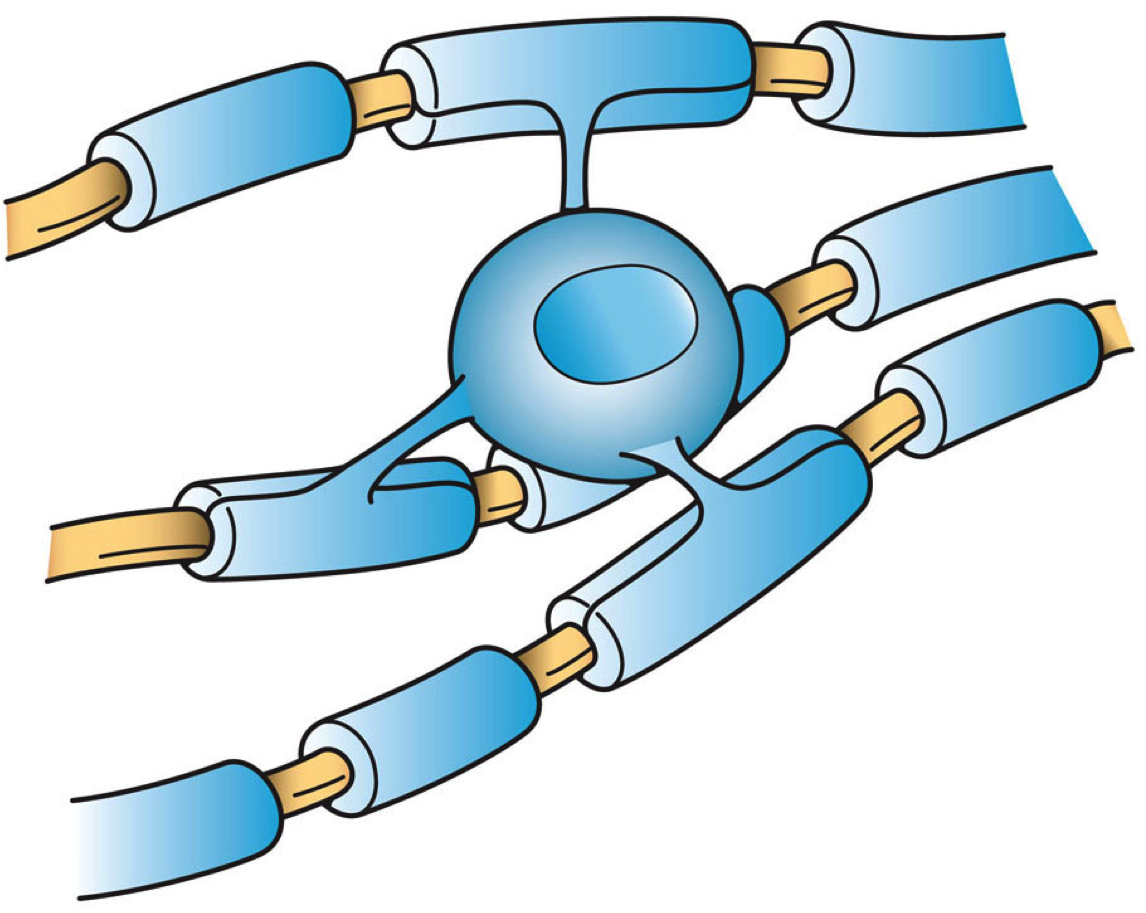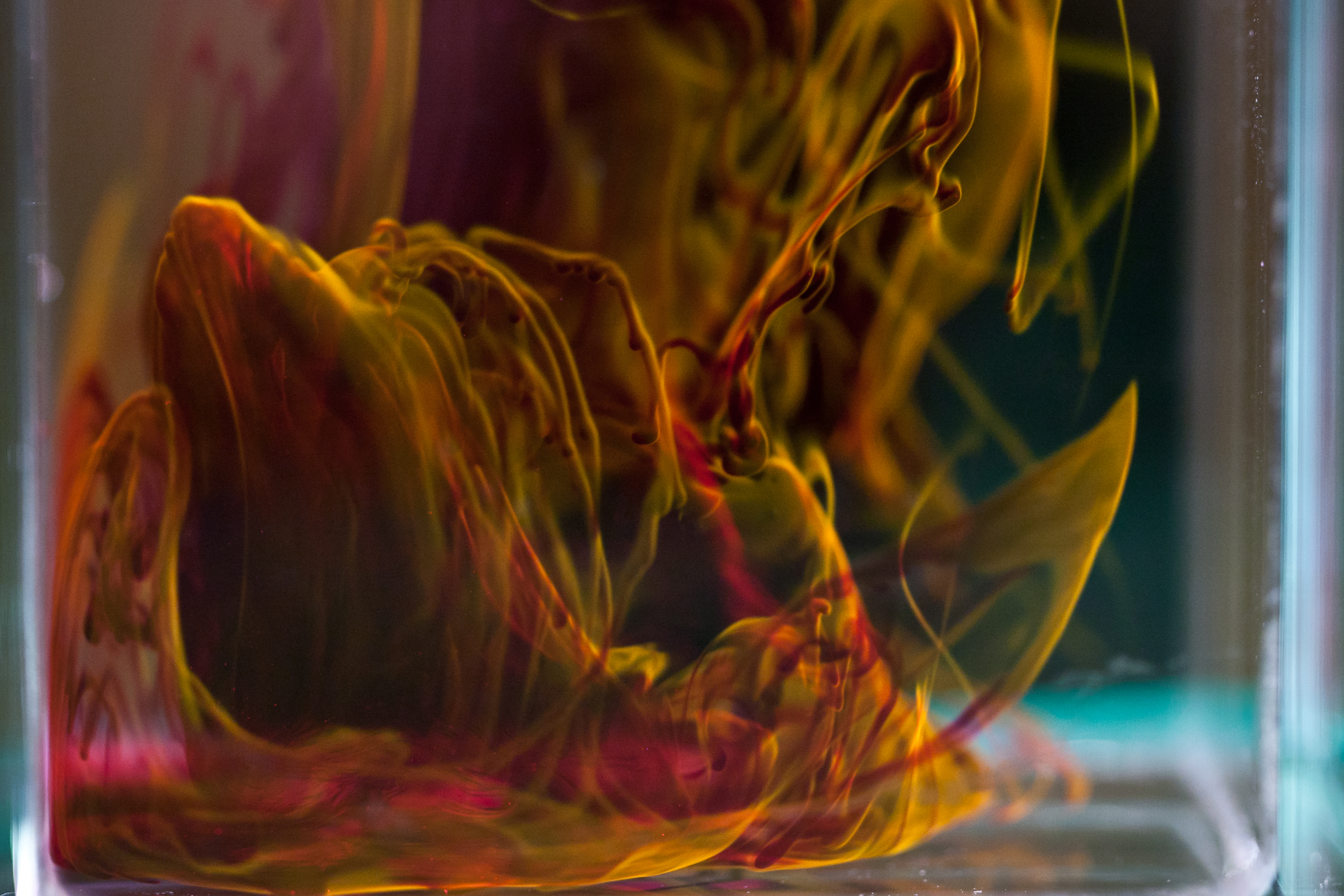|
Sulforhodamine 101
Sulforhodamine 101 (SR101) is a red fluorescent dye. In neurophysiological experiments which comprise calcium imaging methods, it can be used for a counterstaining of astrocytes to be able to analyze data from neurons separately. However, in addition to labeling astrocytes, SR101 labels myelinating oligodendrocytes. SR101 has been reported to affect excitability of neurons and should therefore be used with caution. A sulfonyl chloride In chemistry, a sulfonyl halide consists of a sulfonyl () group singly bonded to a halogen atom. They have the general formula , where X is a halogen. The stability of sulfonyl halides decreases in the order fluorides > chlorides > bromides > ... derivative of sulforhodamine 101, known as Texas Red, is used for conjugation to a number of functional groups, especially primary amines. References {{Reflist Benzenesulfonates Rhodamine dyes Nitrogen heterocycles Oxygen heterocycles ... [...More Info...] [...Related Items...] OR: [Wikipedia] [Google] [Baidu] |
Fluorescent
Fluorescence is one of two kinds of photoluminescence, the emission of light by a substance that has absorbed light or other electromagnetic radiation. When exposed to ultraviolet radiation, many substances will glow (fluoresce) with colored visible light. The color of the light emitted depends on the chemical composition of the substance. Fluorescent materials generally cease to glow nearly immediately when the radiation source stops. This distinguishes them from the other type of light emission, phosphorescence. Phosphorescent materials continue to emit light for some time after the radiation stops. This difference in duration is a result of quantum spin effects. Fluorescence occurs when a photon from incoming radiation is absorbed by a molecule, exciting it to a higher energy level, followed by the emission of light as the molecule returns to a lower energy state. The emitted light may have a longer wavelength and, therefore, a lower photon energy than the absorbed rad ... [...More Info...] [...Related Items...] OR: [Wikipedia] [Google] [Baidu] |
Neurophysiological
Neurophysiology is a branch of physiology and neuroscience concerned with the functions of the nervous system and their mechanisms. The term ''neurophysiology'' originates from the Greek word ''νεῦρον'' ("nerve") and ''physiology'' (which is, in turn, derived from the Greek ''φύσις'', meaning "nature", and ''-λογία'', meaning "knowledge"). Neurophysiology has applications in the prevention, diagnosis, and treatment of many neurological and psychiatric diseases. Neurophysiological techniques are also used by clinical neurophysiologists to diagnose and monitor patients with neurological diseases. The field involves all levels of nervous system function, from molecules and cells to systems and whole organisms. Areas of study include: * The electrochemical properties of neurons * Function and regulation of proteins in neurons and glia * Metabolic reactions relevant to neural function * Cell signalling in the nervous system * Neurotransmission and synaptic pl ... [...More Info...] [...Related Items...] OR: [Wikipedia] [Google] [Baidu] |
Calcium Imaging
Calcium imaging is a microscopy technique to optically measure the calcium (Ca2+) status of an isolated cell, tissue or medium. Calcium imaging takes advantage of calcium indicators, fluorescent molecules that respond to the binding of Ca2+ ions by fluorescence properties. Two main classes of calcium indicators exist: chemical indicators and genetically encoded calcium indicators (GECI). This technique has allowed studies of calcium signalling in a wide variety of cell types, and can be used to measure electrical activity in hundreds of neurons in cell culture, or in living animals during ongoing behavior. Chemical indicators Chemical indicators are small molecules that can chelate calcium ions. All these molecules are based on an EGTA homologue called BAPTA, with high selectivity for calcium (Ca2+) ions versus magnesium (Mg2+) ions. This group of indicators includes fura-2, indo-1, fluo-3, fluo-4, Calcium Green-1. These dyes are often used with the chelator carboxyl grou ... [...More Info...] [...Related Items...] OR: [Wikipedia] [Google] [Baidu] |
Counterstain
A counterstain is a stain with colour contrasting to the principal stain, making the stained structure easily visible using a microscope. Examples include the malachite green counterstain to the fuchsine stain in the Gimenez staining technique and the eosin counterstain to haematoxylin in the H&E stain. In Gram staining, crystal violet stains only Gram-positive bacteria, and safranin counterstain is applied which stains all cells, allowing the identification of Gram-negative bacteria as well. An alternative method uses dilute carbofluozide. Counterstains are sometimes used to separate animals from organic detritus In biology, detritus ( or ) is organic matter made up of the decomposition, decomposing remains of organisms and plants, and also of feces. Detritus usually hosts communities of microorganisms that colonize and decomposition, decompose (Reminera ... in microbiology studies. References Staining {{pathology-stub ... [...More Info...] [...Related Items...] OR: [Wikipedia] [Google] [Baidu] |
Astrocyte
Astrocytes (from Ancient Greek , , "star" and , , "cavity", "cell"), also known collectively as astroglia, are characteristic star-shaped glial cells in the brain and spinal cord. They perform many functions, including biochemical control of endothelial cells that form the blood–brain barrier, provision of nutrients to the nervous tissue, maintenance of extracellular ion balance, regulation of cerebral blood flow, and a role in the repair and scarring process of the brain and spinal cord following infection and traumatic injuries. The proportion of astrocytes in the brain is not well defined; depending on the counting technique used, studies have found that the astrocyte proportion varies by region and ranges from 20% to around 40% of all glia. Another study reports that astrocytes are the most numerous cell type in the brain. Astrocytes are the major source of cholesterol in the central nervous system. Apolipoprotein E transports cholesterol from astrocytes to neurons and ot ... [...More Info...] [...Related Items...] OR: [Wikipedia] [Google] [Baidu] |
Neuron
A neuron (American English), neurone (British English), or nerve cell, is an membrane potential#Cell excitability, excitable cell (biology), cell that fires electric signals called action potentials across a neural network (biology), neural network in the nervous system. They are located in the nervous system and help to receive and conduct impulses. Neurons communicate with other cells via synapses, which are specialized connections that commonly use minute amounts of chemical neurotransmitters to pass the electric signal from the presynaptic neuron to the target cell through the synaptic gap. Neurons are the main components of nervous tissue in all Animalia, animals except sponges and placozoans. Plants and fungi do not have nerve cells. Molecular evidence suggests that the ability to generate electric signals first appeared in evolution some 700 to 800 million years ago, during the Tonian period. Predecessors of neurons were the peptidergic secretory cells. They eventually ga ... [...More Info...] [...Related Items...] OR: [Wikipedia] [Google] [Baidu] |
Oligodendrocyte
Oligodendrocytes (), also known as oligodendroglia, are a type of neuroglia whose main function is to provide the myelin sheath to neuronal axons in the central nervous system (CNS). Myelination gives metabolic support to, and insulates the axons of most vertebrates. A single oligodendrocyte can extend its Cellular extensions, processes to cover up to 40 axons, that can include multiple adjacent axons. The myelin sheath is segmented along the axon's length at gaps known as the nodes of Ranvier. In the peripheral nervous system the myelination of axons is carried out by Schwann cells. Oligodendrocytes are found exclusively in the CNS, which comprises the brain and spinal cord. They are the most widespread cell lineage, including oligodendrocyte progenitor cells, pre-myelinating cells, and mature myelinating oligodendrocytes in the CNS white matter. Non-myelinating oligodendrocytes are found in the grey matter surrounding and lying next to neuronal cell bodies. They are known as neu ... [...More Info...] [...Related Items...] OR: [Wikipedia] [Google] [Baidu] |
Sulfonyl Chloride
In chemistry, a sulfonyl halide consists of a sulfonyl () group singly bonded to a halogen atom. They have the general formula , where X is a halogen. The stability of sulfonyl halides decreases in the order fluorides > chlorides > bromides > iodides, all four types being well known. The sulfonyl chlorides and fluorides are of dominant importance in this series. Sulfonyl halides have tetrahedral sulfur centres attached to two oxygen atoms, an organic radical, and a halide. In a representative example, methanesulfonyl chloride, the S=O, S−C, and S−Cl bond distances are respectively 142.4, 176.3, and 204.6 pm. Sulfonyl chlorides Sulfonic acid chlorides, or sulfonyl chlorides, are a sulfonyl halide with the general formula . Production Arylsulfonyl chlorides are made industrially in a two-step, one-pot reaction from an arene (in this case, benzene) and chlorosulfuric acid: : : The intermediate benzenesulfonic acid can be chlorinated with thionyl chloride as wel ... [...More Info...] [...Related Items...] OR: [Wikipedia] [Google] [Baidu] |
Texas Red
Texas Red or sulforhodamine 101 acid chloride is a red fluorescent dye, used in histology for staining cell specimens, for sorting cells with fluorescent-activated cell sorting machines, in fluorescence microscopy applications, and in immunohistochemistry. Texas Red fluoresces at about 615 nm, and the peak of its absorption spectrum is at 589 nm. The powder is dark purple. Solutions can be excited by a dye laser tuned to 595-605 nm, or less efficiently a krypton laser at 567 nm. The absorption extinction coefficient at 596 nm is about 85,000 M−1cm−1. The compound is usually a mixture of two monosulfonyl chlorides, i.e., as pictured, or with the SO3 and SO2Cl groups exchanged. It can be used as a marker of proteins, with which it easily forms conjugates via the sulfonyl chloride (SO2Cl) group. In water, the sulfonyl chloride group of unreacted Texas Red molecules hydrolyses to sulfonate and the molecule becomes the very water-soluble sulforhodamin ... [...More Info...] [...Related Items...] OR: [Wikipedia] [Google] [Baidu] |
Benzenesulfonates
Benzenesulfonic acid (conjugate base benzenesulfonate) is an organosulfur compound with the formula C6 H6 O3 S. It is the simplest aromatic sulfonic acid. It forms white deliquescent sheet crystals or a white waxy solid that is soluble in water and ethanol, slightly soluble in benzene and insoluble in nonpolar solvents like diethyl ether. It is often stored in the form of alkali metal salts. Its aqueous solution is strongly acidic. Preparation and structure Benzenesulfonic acid is prepared from the sulfonation of benzene using concentrated sulfuric acid: : This conversion illustrates aromatic sulfonation, which has been called "one of the most important reactions in industrial organic chemistry". As confirmed by X-ray crystallography, benzenesulfonic acid features tetrahedral sulfur attached to a planar phenyl ring. The C-S, S=O, and S-OH distances are respectively 1.75, 1.43 (avg), and 1.55 Å. Reactions Benzenesulfonic acid exhibits the reactions typical of other aromatic s ... [...More Info...] [...Related Items...] OR: [Wikipedia] [Google] [Baidu] |
Rhodamine Dyes
Rhodamine is a family of related dyes, a subset of the triarylmethane dyes. They are derivatives of xanthene. Important members of the rhodamine family are rhodamine 6G, Rhodamin WT, Texas Red (Sulforhodamin 101), rhodamine 123, and rhodamine B. They are mainly used to dye paper and inks, but they lack the lightfastness for fabric dyeing. Use Aside from their major applications, they are often used as a tracer dye, e.g. to determine the rate and direction of flow and transport of water. Rhodamine dyes fluoresce and can thus be detected using Fluorometers. Rhodamine dyes are used extensively in biotechnology applications such as fluorescence microscopy, flow cytometry, fluorescence correlation spectroscopy and ELISA. Rhodamine 123 is used in biochemistry to inhibit mitochondrion function. Rhodamine 123 appears to bind to the mitochondrial membranes and inhibit transport processes, especially the electron transport chain, thus slowing down cellular respiration. It is a s ... [...More Info...] [...Related Items...] OR: [Wikipedia] [Google] [Baidu] |







